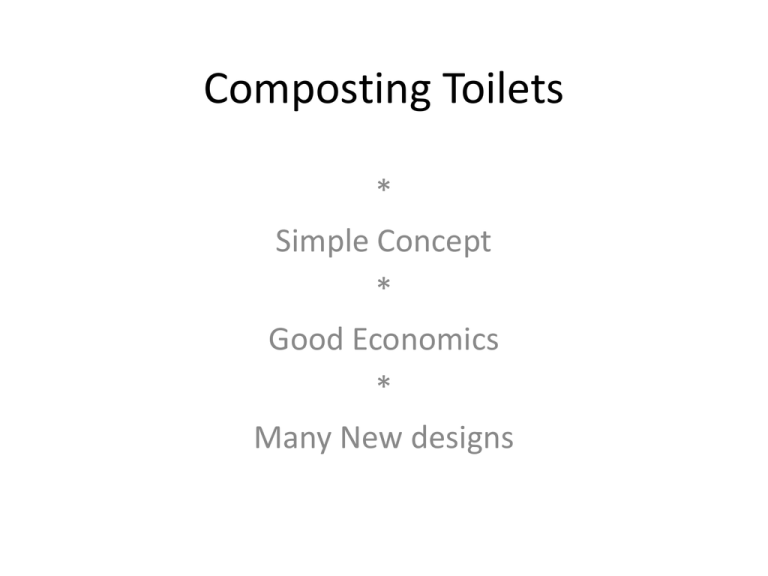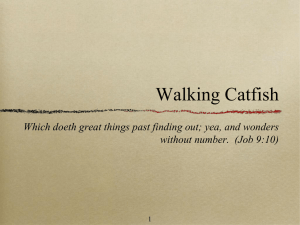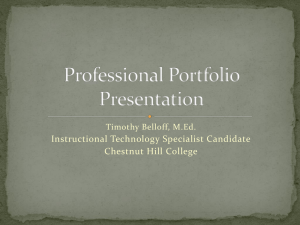Composting Toilets
advertisement

Composting Toilets * Simple Concept * Good Economics * Many New designs Compost at the Beginning Image courtesy of the Black Thumb Gardener Compost at the End Image courtesy of The Brown Daily Herald Composting Toilets • Simple, low-cost, on-site sanitation • Human waste is composted to remove pathogens • End product: “humanure”- a nutrient rich soil amendment Image courtesy of Peter Morgan Decomposition: How Does it Work? • Composting chamber: Feces + Dry materials (such as sawdust, straw, or ash) • When full, chamber is sealed or moved to composting site for one-year to become humanure Images courtesy of http://www.greenprophet.com and Sustainable sanitation Dehydration: Vietnam Double Vault Image courtesy of U. Winblad & M. Simpson-Hébert Why Divert Urine? Image courtesy of SSWM Soil Composting: Arborloo • Simplest composting toilet • Single pit system, site is temporary • Once full, toilet structure is moved and site is left to compost • Often a tree is planted in hole Image courtesy of Peter Morgan Soil Composting: Skyloo • Urine is diverted to a separate container to be used directly as fertilizer • Once feces bucket is full, it is composted Image courtesy of Peter Morgan Images courtesy of Peter Morgan Compost Filters • Pre-treatment method (replaces septic tank) • Solids decompose in filter for one year to become compost • Liquids are drained to a constructed wetland Images courtesy of SSWM Pathogen Removal Image courtesy of Cartier International/Fresh Life. Economics of Humanure Image courtesy of Linus Dagerskog, CREPA Economics of Humanure: Urine Image courtesy of U. Winblad & M. Simpson-Hébert Economics of Humanure Image courtesy of U. Winblad & M. Simpson-Hébert Economics of Humanure Image courtesy of U. Winblad & M. Simpson-Hébert Image courtesy of Anna Richert Burkina Faso Excreta Composting Business - UDDT Images courtesy of New Agriculturist Tiger Toilet- Vermicomposting Images courtesy of Sanitation Ventures Fresh Life Toilet Images courtesy of Cartier International/Fresh Life. What’s right for your household? What’s right for your community?







